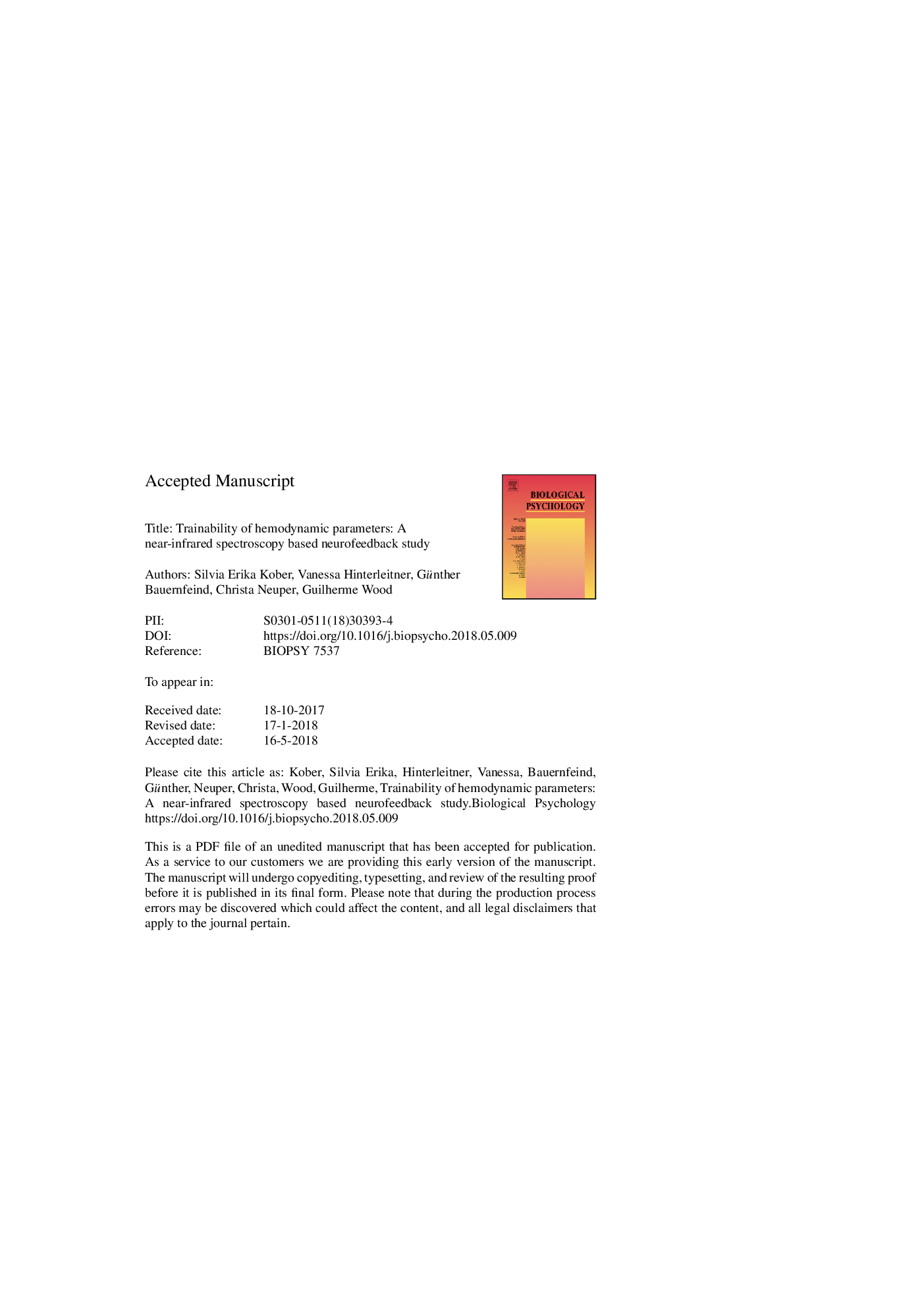| Article ID | Journal | Published Year | Pages | File Type |
|---|---|---|---|---|
| 7278102 | Biological Psychology | 2018 | 45 Pages |
Abstract
We investigated the trainability of the hemodynamic response as assessed with near-infrared spectroscopy (NIRS) during one neurofeedback (NF) session. Forty-eight participants were randomly assigned to four different groups that tried to either increase or decrease oxygenated (oxy-Hb) or deoxygenated hemoglobin (deoxy-Hb) over the inferior frontal gyrus during imagery of swallowing movements. Deoxy-Hb could be successfully up-regulated while oxy-Hb could be successfully down-regulated during NF. Participants were not able to down-regulate deoxy-Hb or to up-regulate oxy-Hb. These results show that the natural course of oxy- and deoxy-Hb during movement imagery can be reinforced by providing real-time feedback of the corresponding NIRS parameter since deoxy-Hb generally increases and oxy-Hb decreases during imagery of swallowing. Furthermore, signal-to-noise ratio of deoxy-Hb but not of oxy-Hb improved during training. Our results provide new insights into the trainability of the hemodynamic response as assessed with NIRS and have an impact on the application of NIRS-based real-time feedback.
Related Topics
Life Sciences
Neuroscience
Behavioral Neuroscience
Authors
Silvia Erika Kober, Vanessa Hinterleitner, Günther Bauernfeind, Christa Neuper, Guilherme Wood,
